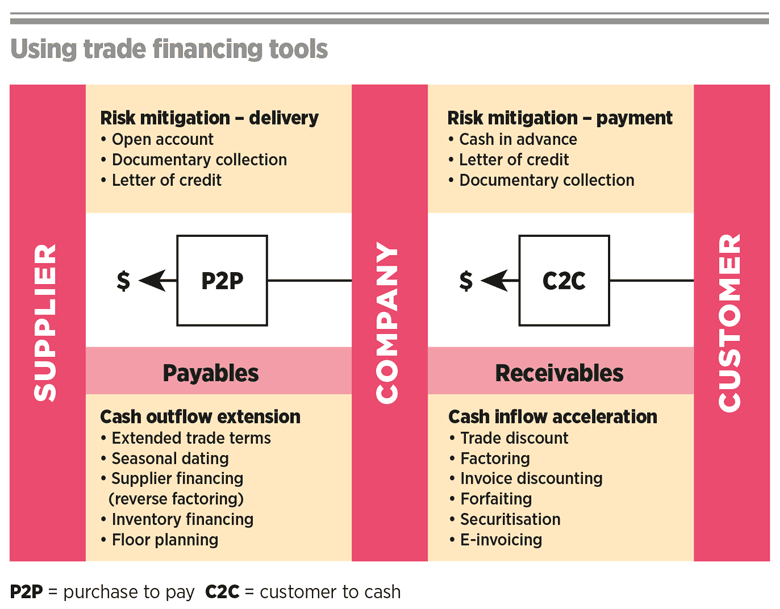
In any transaction, there is a level of risk for both the buyer and the seller. The buyer’s primary concern is the quality and timing of the goods received. The seller, on the other hand, is mostly concerned about getting paid.
In order to ensure that each party to a trade has their objectives met and to avoid businesses grinding to a halt, a series of risk management tools have been developed to enable transactions to be settled in good order.
These are referred to as trade finance solutions, and the payment terms inherent in the various products provide more or less protection to one or other party in the transaction.
Trade transactions are commonly settled in one of the following ways:
This diagram illustrates how a combination of cash management and trade finance techniques and products can be used to manage the working capital cycle (cash management tools – the bottom boxes) and the risk in doing business (trade finance solutions – top boxes):

In the purchase-to-pay (P2P) cycle between the company and the supplier, the company’s primary concerns are with mitigating delivery risk and extending the payment cycle as far as commercially reasonable.
The products identified in the cash outflow extension box are designed to enable the company to extend the time before payment is made. This may be done ‘directly’ by extending trading terms (for example, moving to 60 days before payment), or ‘indirectly’, by establishing some form of supplier finance solution.
In the customer-to-cash (C2C) cycle, where the goods have been sold to a customer, the company wants to mitigate payment risk and accelerate the cash inflows.
The products listed in the cash inflow acceleration box are designed either to incentivise the customer to pay promptly (for example, trade discounts), or to enable the company to get (much of) the value due from the customer from a third party more quickly than it would from the customer itself (for example, factoring).
There are advantages and disadvantages to many of these solutions.
Some techniques may not be available to certain companies depending on their industry, location, creditworthiness or size. There may also be other ramifications. For example, in some countries, factoring is a recognised way of raising liquidity, while in others it is viewed as a sign of financial distress.
Working capital tools unlock the cash tied up in the supply chain, while trade finance tools manage the risk associated with doing business, particularly internationally. The treasurer needs to understand the purpose of both and how they may be relevant for their company.
Sarah Boyce is associate director of education at the ACT
